The latest release of Fedora Workstation 36 continues the Fedora Project’s ongoing commitment to delivering the latest innovations in the open source world. This article describes some of the notable user-facing changes that appear in this version.
GNOME 42
Fedora Workstation 36 includes the latest version of the GNOME desktop environment. GNOME 42 includes many improvements and new features. Just some of the improvements include:
- Significantly improved input handling, resulting in lower input latency and improved responsiveness when the system is under load. This is particularly beneficial for games and graphics applications.
- The Wayland session is now the default for those who use Nvidia’s proprietary graphics driver.
- A universal dark mode is now available.
- A new interface has been added for taking screenshots and screen video recordings.
In addition, many of the core apps have been ported to GTK 4, and the shell features a number of subtle refinements.
Refreshed look and feel
GNOME Shell features a refreshed look and feel, with rounder and more clearly separated elements throughout. All the symbolic icons have been updated and the top bar is no longer rounded.
Universal dark mode option
In Settings > Appearance, you can now choose a dark mode option which applies a dark theme to all supported applications. In addition, the pre-installed wallpapers now include dark mode variants. Dark themes can help reduce eye-strain when there is low ambient light, can help conserve battery life on devices with OLED displays, and can reduce the risk of burn-in on OLED displays. Plus, it looks cool!
New screenshot interface
Previously, pressing the Print Screen key simply took a screenshot of the entire screen and saved it to the Pictures folder. If you wanted to customize your screenshots, you had to remember a keyboard shortcut, or manually open the Screenshots app and use that to take the screenshot you wanted. This was inconvenient.
Now, pressing Print Screen presents you with an all-new user interface that allows you to take a screenshot of either your entire screen, just one window, or a rectangular selection. You can also choose whether to hide or show the mouse pointer, and you can also now take a screen video recording from within the new interface.
Core applications
GNOME’s core applications have seen a number of improvements. A number of them have been ported to GTK 4 and use libadwaita, a new widget library that implements GNOME’s Human Interface Guidelines.
- Files now includes the ability to sort files by creation date, and includes some visual refinements, such as a tweaked headerbar design and file renaming interface.
- The Software app now includes a more informative update interface, and more prominently features GNOME Circle apps.
- The Settings app now has a more visually appealing interface matching the visual tweaks present throughout GNOME Shell.
- Text Editor replaces Gedit by default. Text Editor is an all-new app built in GTK 4 and libadwaita. You can always reinstall Gedit by searching for it in the Software app.
Wayland support on Nvidia’s proprietary graphics driver
In previous versions, Fedora Workstation defaulted to the X display server when using Nvidia’s proprietary graphics driver – now, Fedora Workstation 36 uses the Wayland session by default when using Nvidia’s proprietary graphics driver.
If you experience issues with the Wayland session, you can always switch back to the Xorg session by clicking the gear icon at the bottom-right corner of the login screen and choosing “GNOME on Xorg”.
Under-the-hood changes throughout Fedora Linux 36
- When installing or upgrading packages with DNF or PackageKit, weak dependencies that have been manually removed will no longer be reinstalled. That is to say: if foo is installed and it has bar as a weak dependency, and bar is then removed, bar will not be reinstalled when foo is updated.
- The Noto fonts are now used by default for many languages. This provides greater coverage for different character sets. For users who write in the Malayalam script, the new Meera and RIT Rachana fonts are now the default.
- systemd messages now include unit names by default rather than just the description, making troubleshooting easier.
Upgrade now!
You can upgrade your system through GNOME Software, via dnf system-upgrade in the terminal, or download the live ISO image from the official website.
Also check out…
There are always cool things happening in the Fedora Project!
- The social links in the upper right corner on Fedora Magazine now include our official Fedora YouTube prescence, Fedora Matrix homeserver, and the Fedora Discussion website!
- Fedora Discussion has been lightly renovated! Come and chat with us! ☺️

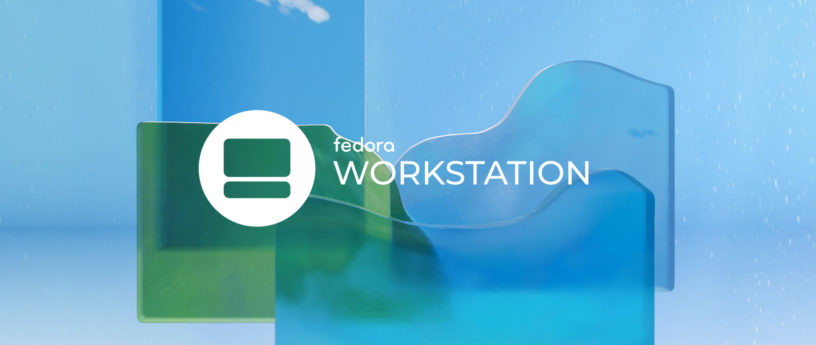



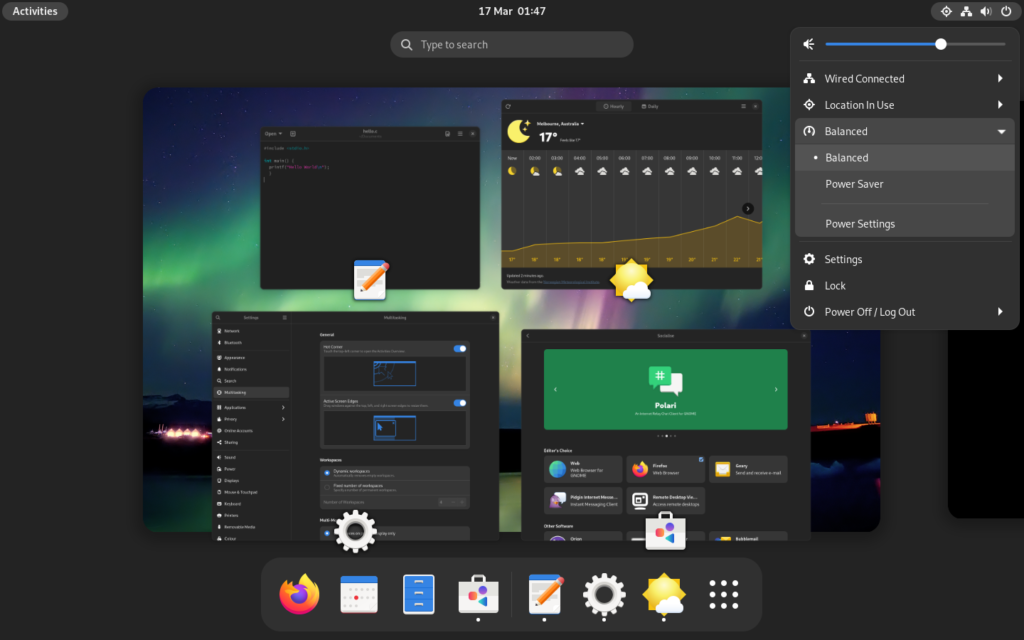
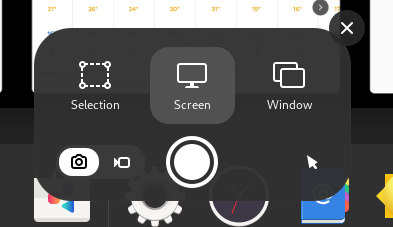
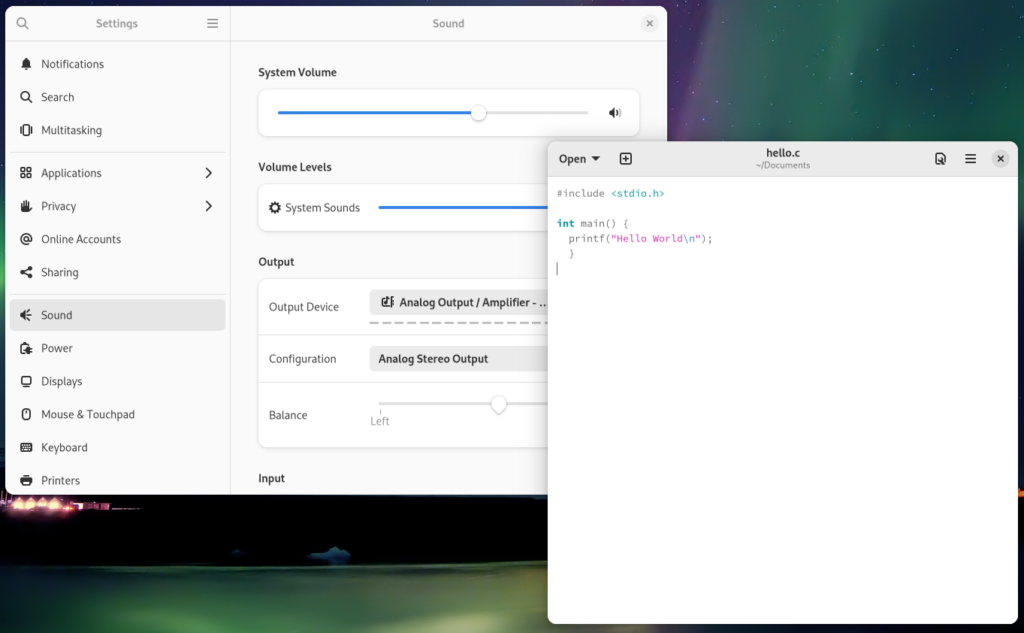
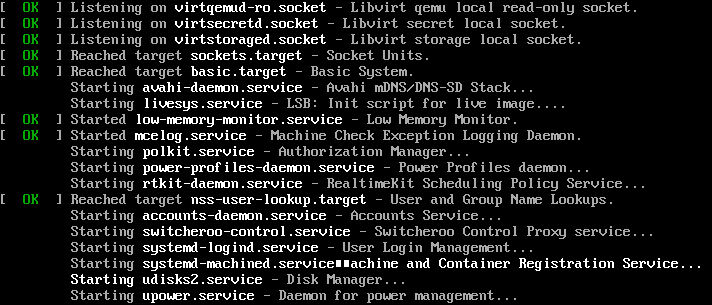

Jay_Arr
How do you enable the built-in RDP-based Remote Desktop sharing option for a logged-out session? The option stays enabled for the user account but isn’t enabled on a system context. If you boot into, or log out to GDM, RDP is no longer running.
All the information I can find only about using RDP sessions is out of date.
Seems kind of silly if you can’t use it as a fully-featured RDP option. Seems to work more like Remote Assistance instead. Am I not seeing the whole picture on this?
Rubén
The Wayland session is NOT the default for those who use Nvidia’s legacy proprietary graphics driver, v470xxx.
tsyang
After upgrade to F36, I installed akmod-nvidia-470xx-470.103.01-2.fc36.x86_64. It is working fine now.
Rubén
It works fine after reinstalling the driver, but you must still select “GNOME on Wayland” at the GDM login screen. That’s not “default”.
I filled in a bug at bugzilla. I’m waiting for an answer.
Ethan Bergstrom
No issues for me at all when upgrading Silverblue via Software Center.
I was watching the journal as rpm-ostree did its thing, and it automatically upgraded akmod-nvidia for me as part of the rebase.
harpia
Why wasn’t the new Terminal app included to replace the old gnome-terminal?
John
I believe Console is still in beta and isn’t intended to be a replacement for GNOME Terminal. It’s a simplified alternative for non technical types who are more comfortable in a GUI environment and just run the occasional command without the need for all the bells and whistles developers might use.
Grey the earthling
Console isn’t intended to replace all of GNOME Terminal’s feature,; but it is now GNOME’s core terminal app, so in that sense it does replace GNOME Terminal — see https://apps.gnome.org/
Jay_Arr
I installed a stock Fedora 36, added RPM Fusion and Flathub, and GNOME Software Center still won’t find the new Console app when I search for it using the terms “console” or “gnome console” in the search field. Something seems wrong with that.
jseger9000
My reply wound up under someone else’s comment. So I’ll try a repost:
I had the same problem of not being able to find Gnome Console. I wound up running:
sudo dnf install gnome-console
Rubén
Tillix would be even a better replacement.
Taylor
When trying to encrypt the installation, no matter what keyboard layout you have chosen (in my case, Latin American Spanish), it will always use the US layout.
This is a mistake.
harpia
This is bug report 2070823: https://bugzilla.redhat.com/show_bug.cgi?id=2070823
Kamil
In the language dialog, there’s a message that for the process of installation, you need to configure keyboard layouts manually in the live environment. It sucks, but it was the best that could be done for this release.
Heliosstyx
For me this work-around helps: select under the Live-Session your desired keyboard-layout and afterwards start the installer: select there the same keyboard and under encryption you will find the right keyboard.
oldkid
Tried the new gnome console, and it felt like a dumbed down app like those on Windows 10. The text editor, well, I opened a c sharp file, then opened a new tab, it froze. Hate to discourage but that’s my experience.
Bob
Congratulations on the release. Just a question what do I do if I want to upgrade from workstation 36 beta to the stable version?.
And thanks to everyone for there hard work.
Merlin Cooper
Simply run a dnf update as normal. The repositories stay the same between the beta and final release! 🙂
David
I did the upgrade but Text Editor has not been installed. I still have Gedit
Marc
sudo dnf install gnome-text-editor
Mirek
I have installed manually and it is buggy. For example PASTE of text from other program didn’t work at all. Uninstalled and using gedit.
Fedora Workstation
HP Pavilion 15 eh1083ur – Fedora 36 works great out of the box.
Remark: Alt+Shift toggles language BUT the language icon doesn’t change in the panel.
Ma Yaning
Gnome 42 provides a built-in screenshot tool instead of gnome-screenshot. How can I call it from the command line?I want to take and edit the screenshot as follows:
gnome-screenshot -caf “$IMAGE_NAME”
xclip -selection clipboard -t image/png “$IMAGE_NAME”
drawing “$IMAGE_NAME”
Bart
I’ll wait another years. Maybe Gnome will release theme for people who don’t like Gnome blackness. I really don’t like top bar in black. Gnome is for people with depression 🙂
Merlin Cooper
You can always apply your own Shell theme, or log in to the GNOME Classic session which is themed white by default 🙂
axel
That’s a bit like saying “Gnome is for people with with tuberculosis”. Depression is an illness, please try to stay aware of that 🙂
Odd S.
You don’t have to use Gnome if you don’t like it. I use the Xfce version, ’cause I’m not a big fan of Gnome either.
Odd S.
Odd S.
You don’t have to use Gnome if you don’t like it. I use the Xfce version, ’cause I’m not a big fan of Gnome either. And thanks to the Fedora team for Fedora 36. The upgrade from 35 (Xfce) was smooth and painless!
Odd S.
David Legg
Well done, chaps and chapesses. This looks like a nice stable, important release. Hope to install it everywhere soon …
alphas
Update worked well except the nvidia graphics.
I was using the abandoned xorg-x11-drv-intel driver instead of the actively developed modesetting driver on my laptop with PRIME, which broke it (black screen with mouse)… had probably something to do with mesa removing support for i965 (got some errors not finding /usr/lib64/dri/i965_dri.so in the Xorg.0.log).
Changing xorg.conf to use modesetting fixed it.
Biji
First time upgrading Fedora right after released, Thanks very stable.
also thanks to flatpak and podman+distrobox
Peter
Nvidia 510 or 470 does nit work with fedora 36
alphas
i had to
to trigger building the nvidia module again
Jade
A GENTLEMEN AND A SCHOLAR….
Katsuharu Tanaka
To everyone on the Fedora development team.
We are creating Live USB on Windows 10 using Fedora Media creator. However, with 16GB of memory, the message “The area is small” appears and the process ends.
Looking at the source code of GitHub, there seems to be no problem, but isn’t it compiled in MinGW x32 mode at compile time? In that case, 4.0GB will be the limit, and it seems that it will fail when extracting the ISO file.
Specifically, it seems that Fedora LiveUSB has not been created on all Windows.
Geoff
the gui for firewalld does not work it hangs when trying to enter user password when opening it on fedora 36 with a message saying it faild
Tim
Upgrade from 35 to 36 on my Framework laptop went smoothly. Fingerprint login was disabled after the upgrade. I had to reregister my fingerprint to get it to work again. Other than that, all I can say is “Well done!”. A far better upgrade experience for me than I encountered upgrading a certain distribution from Africa.
Costa
Someone in the moderation has been censoring comments for sure
Gregory Bartholomew
It’s not me. But I do see a handful of comments in the trash bin. I’ll ask the other editors if they are deleting comments at the next editor’s meeting. There is also an AI anti-spam system running on this site called Akismet that may be responsible. I’m not really sure how that works, so I’m not sure if there is much I can do about it if that is blocking things.
Daniel
Nvidia GPU Linux module just opened source under GPL/MIT, how will this affect Fedora 36?
https://developer.nvidia.com/blog/nvidia-releases-open-source-gpu-kernel-modules/
jseger9000
I had the same problem. I wound up running:
sudo dnf install gnome-console
Audun Nes
Thanks for another stellar release.
I usually just upgrade Fedora Workstation using dnf on the command line or through the Software Center. This time I chose to do a clean install instead, and use the Fedora KDE Plasma spin instead of the Workstation.
Installation went smooth, and no issues discovered so far. It’s been a very long time since I last used KDE (pre plasma). It looks great and feels smooth on my 5 year old laptop.
Peter
Great release, maybe best Fedora release ever. Thanks and Congratulations to everybody involved.
One thing in the article is misleading. The iso cannot be used to upgrade an existing Fedora system
Ray Bee
Regarding the new Noto fonts, I upgraded from F36 and I don’t see any changes from the Gnome defaults. Even creating a new user from scratch still defaults to Cantarell. What am I missing?… Where are the Noto fonts used?
jseger9000
I noticed the same. I changed the fonts to Noto using Gnome Tweaks, but then I switched back. I like Cantarell, though if one of the updates does switch the default, that is fine.
Sunspot
The Noto fonts defaults has nothing to do with Gnome, but fontconfig, which handles stuff like webpages where no fonts are assigned. 😉
Cantarell is the default for Gnome, so it’ll continue to be the default for Gnome in Fedora as well.
jseger9000
Maybe I misunderstood. I thought Noto was replacing Cantarell all through Fedora, at least on some languages.
Peter
Another thing I noted:
A link to the user-support forum is missing: Ask.fedoraproject.org
Andre Gompel
Gregory :
MATE Desktop version (available as bittorent) : Because of its great simplicity and functionality, many of us do prefer the MATE Desktop version of Fedora.
Consequently, please don’t treat Fedora a GNOME only distro, and consider, document the MATE version too.
It is a good surprise that several of the gnome-apps come installed with Fedora 36 MATE-Compiz version.
For the novice :
dnf -C info gnome-* | less
If it ever gets somewhere the LxQt version, too, but like for KDE its seems to take for ever for LxQt to emerge… if it ever does.
Suggestion : consider adding a package for Ventoy-USB (gtk only is file) to complement or replace media writer, ideally not using xfat, because CentOS , Alma-Linux so far don’t have the support for it.
Fedora 36 install (this time I favoured a full install), worked quite well, excepted that Anaconda does not want to install it on a GPT partition: it is possible, but require a manual install easy.. when you know how. Hopefully F37 version of Annaconda shall make this simple.
And last but not least, thanks to everyone involved in the development and support of Fedora, a great Linux Distro indeed.
A.G
Merlin Cooper
Hello, Fedora Linux is indeed not a “GNOME only distro”! This article is specifically about what is new in Fedora Workstation, which is the “GNOME version” of Fedora Linux. Hope that clears it up 🙂
Richard England
Andre, would you be willing to write a “What’s new in Fedora Linux 36 MATE edition” for Fedora Magazine? As a MATE user I’d be glad to see it.
Ivo
Something related to nvidia and kernel broke.
nvidia modules in F36 are build and loaded somehow but:
After unlocking the disks during boot the screen goes green when it should display the “bios” logo and fedora icon. When hitting ESC to switch to text mode the system boots to login screen, I am able to login but then only black screen an cursor.
Short press power button, wait , press power button brings up locked screen and I am able to login and use gnome.
Tried several times dnf reinstall kernel-core akmod-nvidia but still the same.
Noticed with lsmod that there are 2 less modules, drm and drm_kms_helper are no build in. Maybe thats the root problem?
config-5.17.6-200.fc35.x86_64:CONFIG_DRM_KMS_HELPER=m
config-5.17.6-300.fc36.x86_64:CONFIG_DRM_KMS_HELPER=y
For now I did rpm -e –nodeps the new F36 kernel and running the last F35 at the moment, this works fine. But for sure is not a solution.
Any hints?
Jade
Just downloaded F36 yesterday.
I’m completely new to Linux and unfortunately this was the Distro I chose to begin with.
I can’t get any Nvidia Drivers to work properly.
I’ve tried everything….
sean
Did you add the rpmfusion.org repo and try to add them that way? You will want to add the rpmfusion.org repos anyway, because they have codecs for audio and video that aren’t necessarily open source licensed and thus protects the project from lawsuits.
Bernd
I’m sure you haven’t tried everything in just one day. What did you try?
joe
you can try
1. enable rpmfusion
https://rpmfusion.org/Configuration
2. enable nvidia
https://rpmfusion.org/Howto/NVIDIA#Installing_the_drivers
Geoff
firewalld GUI does not work on f36 when trying to open it, it crashes when typing in admin password with message failed
James
How to upgrade from 35 to 36 using rpm-ostree in fedora silverblue?
Richard England
There is an article in the pipeline on the upgrade using rpm-ostree for Fedora Silverblue. It should be published Monday 16 May.
james
Commands to run to upgrade from fedora silverblue 35 to fedora silverblue 36:
https://docs.fedoraproject.org/en-US/fedora-silverblue/updates-upgrades-rollbacks/#upgrading
Nastyguy
Awesome! You did well 🙂
OliTech
Fedora with this new update is just GORGEOUS!
sirhcton
My previous comment about Deja-Dup on Fedora 36 seems to have vanished.
jseger9000
Don’t know if it is Fedora 36 or Gnome 42, but the weather widget in the notification pane has finally started working for me on my HP Stream 11. I could never get it to work properly in previous versions.
Dave
Downloading the upgrade from Gnome Software I get this:
“Unable to upgrade to Fedora Linux 36:
Error running transaction: package python3-proton-client-0.7.1-2.noarch is
already installed”
How do I upgrade now? Do I remove package?
Gregory Bartholomew
You might get better user support at https://ask.fedoraproject.org/
Dave
Follow-up: I went to the command line and upgraded through DNF. Upgraded without issues.
Jim W
I installed Fedora 36 using the Software app, and Settings shows “Fedora Linux 36 (Workstation Edition)” under OS Name. But uname -r reports
Did the installation work properly, or is there something else I need to do?
Gregory Bartholomew
You might get better user support at https://ask.fedoraproject.org/
Christopher
Running fresh install of Fedora 36 (Workstation Edition)/Gnome 42.1 on Lenovo T530 laptop.
I don’t have the power button on the top bar next to the Wi-Fi, sound, and battery icon.
Gaurang Arora
dnf auto-complete does not work for me… nothing happens. I have to manually type the complete name of packages. Yum auto-complete works fine though.
Tok
Thank you so much it’s beautiful
mrl
Superchuffed with this upgrade, real good work. The new screencaption options, the native dark mode, faster feel and most of all the rename options in Nautilus/Finder, that one’s a personal favourite. The systemd change is going to help me out some day, which is not today. For today, I’m simply enjoying. Thank you so much.
hu
Thank you very much and congratulations for this very well made version. Until now I found only 3 errors.
darkmode reactivates periodically without my doing
if opening a network stream, firefox downloads stream.m3u instead of starting VLC as external app for playback
encfs crashes when encoding or decoding a directory with BLOWFISH algorythm
I opened new bugs at https://bugzilla.redhat.com for 2. and 3.
K.
Having some issues.
Says: “Unable to upgrade to Fedora Linux 36:
Errors running transaction: file /usr/share/dic/libxslt-devel/EXSLT/devhelp
Makefile conflicts between attempted installs of libxslt-devel-1.1.35-1-1.fc3.i686 and libxslt-devel-1.1.35-1.fc36.x86_64
Gregory Bartholomew
Hi K.
Fedora Linux is rapidly dropping support for 32-bit software. I would try using the following command to remove the “i686” (32-bit) version of the package.